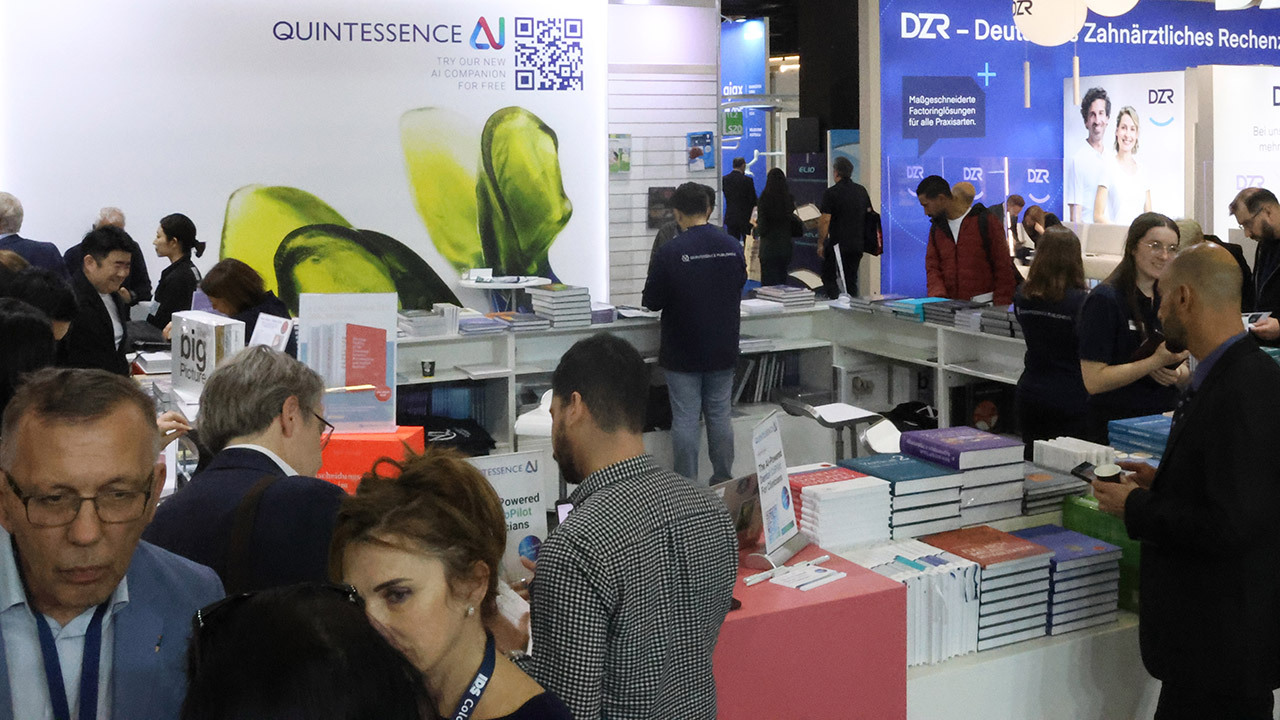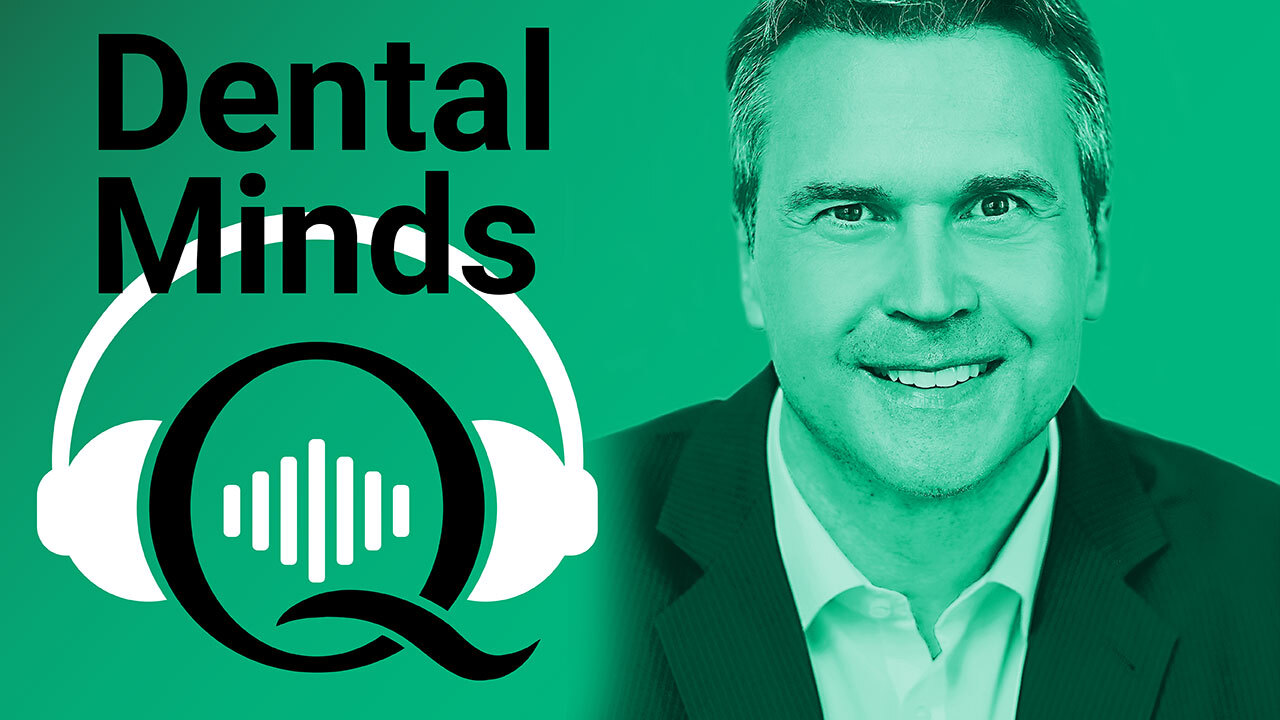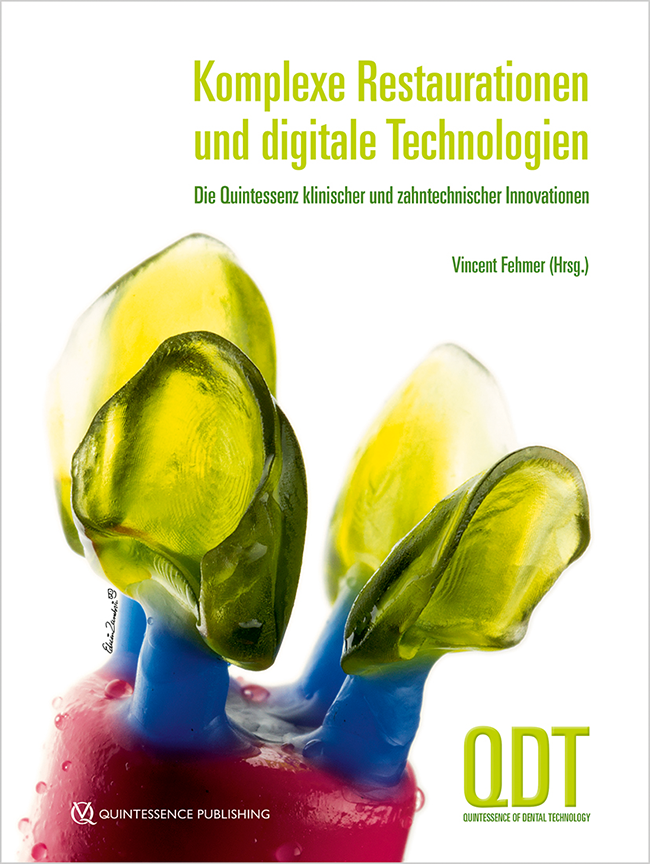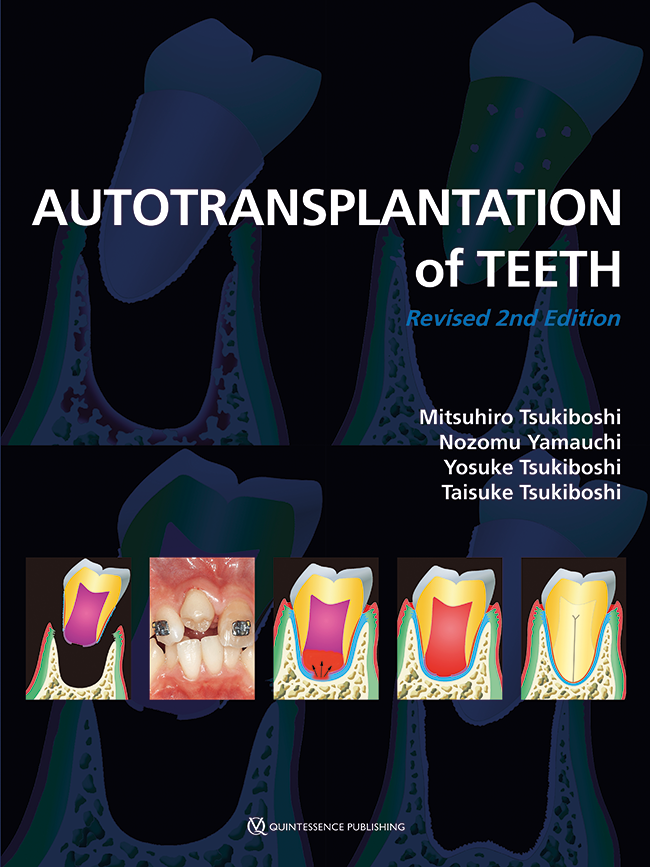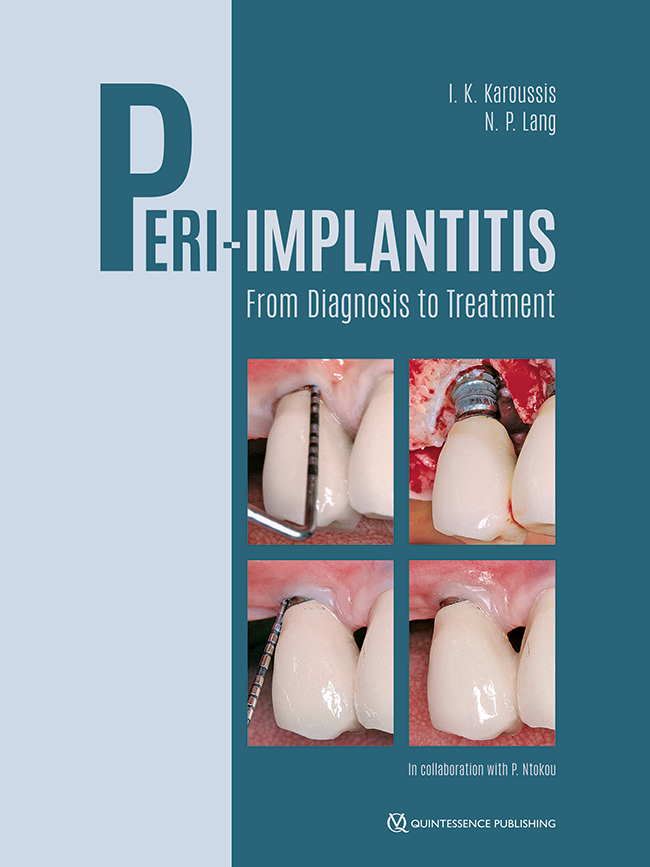For decades, Ivoclar Vivadent has been one of the most innovative dental companies worldwide. The products of the family-owned enterprise headquartered in Schaan, Liechtenstein, have repeatedly set new benchmarks in dentistry and dental technology and are considered to be the gold standard in many cases.
Robert Ganley has worked for Ivoclar Vivadent since 1990. Since 2003 he has been the CEO of the company. As early as autumn 2018 it was announced that effective 1st July 2019, he would pass the baton to Diego Gabathuler, who is currently the Head of Sales EMEA & Latin America at Ivoclar Vivadent. Michael Taube joined the company's leadership team in Schaan as Chief Marketing Officer in 2017. In this interview with Dr Marion Marschall, editor-in-chief at Quintessence News, Ganley, Gabathuler and Taube talked about current market developments, new products, the forthcoming leadership transition and future challenges.
Mr Ganley, on the occasion of the International Expert Symposium in Rome in June 2018, you shared your expectations related to the future development of the global dental market and the growth perspectives of Ivoclar Vivadent in the different markets. How correct have your estimations been?
Robert Ganley: The impact of the trends we envisioned is even greater than we previously assumed. Digital penetrates all levels of our lives, medical and dental. Patients are gaining knowledge through the internet and investigating product options and discussing procedures with their dentists as well as their friends. There is a growing demand for esthetic restorations.
In North America, we expected to grow at a rate of 1 to 2 per cent, while the European market was expected to grow 2 per cent. With 6 per cent, Asia showed above average growth. In Latin America, the Arab countries and Africa, a growth of 4 to 5 per cent also seemed feasible. Overall, we anticipated a dental market growth of 2.5 per cent in 2018. This prognosis has been generally accurate.
Were there any developments which you did not expect – both in the dental market and at Ivoclar Vivadent?
Ganley: The growth of CAD/CAM in dental laboratories increased faster than in dental practices. In fact, dental labs are in many markets more digital than the dental practice. Zirconia increased at a similar rate to the penetration of the lab CAD/CAM. Today, this material is the fastest growing all-ceramic.
How do you see the development of the dentist business both on the international level and in key markets such as Germany? How important is the topic of Prevention for Ivoclar in this context?
Ganley: The dentist business is growing in all world markets, but often at different rates. The developing markets show the highest growth as would be expected.
Diego Gabathuler: Ivoclar Vivadent has succeeded in firmly establishing various dentist products. With around 240,000 Bluephase devices sold, we are the world leader in the field of curing lights. In January this year, the Bluephase G4 was launched, which is not only stylish and dependable, but also distinguished by its intelligent curing assistant, a feature that helps users ensure high-quality polymerization results. The next innovation in this area is just around the corner – it will be launched at IDS 2019.
Prevention, the other topic you have raised, is also very important for Ivoclar Vivadent. A well-coordinated range of products for professional care not only positively affects the oral health of people, but their overall well-being. This will be more strongly taken into consideration in the future.
At IDS 2017, Ivoclar Digital was introduced as a new category. Since then the company has made considerable investments in this area. How has this segment developed? Will new equipment – scanners, 3D printers – and new materials be added?
Ganley: Yes, we showed our new digital machine portfolio, our new digital materials and the new Ivoclar Digital brand at IDS 2017. We knew that we had the know-how both in the materials and equipment sector. Clearly, the development process has taken longer than anticipated, but this was due to the fact that we focused on fulfilling our high standards of quality and performance. When it comes to quality, we do not make any compromises. In summer 2018, the PrograMill PM7 was successfully launched. The PrograMill PM5 and the PrograMill PM3 will follow in a few months' time. The PrograMill One is scheduled to be launched in the 4th quarter of 2019.
Since November 2018, IvoSmile has been available in some markets. This software application, which is based on augmented reality, allows treatment results to be simulated in the dental practice. The app, which was first presented at the International Expert Symposium (IES) in Rome is intended to be used as a consulting tool. How well has this new product been received by dentists? What are your experiences so far?
Ganley: We have only just launched IvoSmile. The interest level has been very high. More apps will follow, because we believe that tools that enable the dentist to communicate in a more effective and more efficient way with the patient are required. These tools allow dental professionals to visualize how patients will look like after the treatment.
Gabathuler: To actually see the final result can increase the desire to receive a certain treatment and facilitate decision-making.
Michael Taube: The initial response to IvoSmile has been very positive. We are curious to see how IDS visitors will respond to the new application.
The first PrograMill milling machines were also launched in Rome. How are customers responding to these proprietary products which were presented for the first time at IDS 2017?
Ganley: The performance of the PrograMill PM7 in the lab has been very good. The demand has exceeded our ability to supply even though we have increased our production levels. Currently, we are intensively working on increasing our production capacities even further.
Gabathuler: We take the high demand as a big compliment. It shows that customers who already own a PM7 are very satisfied and recommend it to others. In contrast to competitive systems, the PrograMill comes with an integrated software solution. In combination with the matching materials, we offer a well-coordinated process for the dental lab.
Using a "one fits all" approach in addressing the different European and world markets is definitely a thing of the past. However, one gets the impression that individual markets such as Germany are becoming increasingly fragmented. The willingness to embrace innovation varies considerably among dentists and dental technicians. Dental lab technicians in particular are very sensitive to developments which could shift work away from the dental laboratory to the dentist's office. How do you handle markets with this kind of divergent needs and apprehensions?
Ganley: Technologies are changing how we live and work. We experience this every day in our lives. The question is whether we are capable of and willing to keep up with this change. Many dental technicians welcome digital technologies because they can improve production and efficiency. Others focus on traditional fabrication techniques. We believe that in the end, customers will have to decide for themselves which method is the right one for them and for their clinical cases.
At Ivoclar Vivadent we see it as our responsibility to develop innovations that create opportunities. We offer options. It is the final decision of the customer to decide which technology option is best for them.
You have positioned yourself clearly in favour of dental lab technology and have repeatedly underscored your commitment to the dental lab. How do you see the future of the dental lab industry and profession in view of the rapid technological changes in this sector?
Ganley: We are very confident that the need for trained technicians will increase in the future. An aging population will present increased case complications to the dentist who will need the skills of the technician to provide the restorative or prosthetic solution. Implant-supported restorations and larger fixed and removable cases make the skills of the technician even more important today and tomorrow.
Gabathuler: In the future, dental technicians will increasingly combine dental craftsmanship with digital processes. I believe that this will allow esthetic restorations to be produced very effectively and efficiently. The dental technician as a digital craftsman – definitely a profession with a future. We continuously strive to improve our offering of further education and training courses as well as services to support our customers in facing these challenges.
What is the feed-back you get from dental technicians? In Rome, Oliver Brix, an international key opinion leader and true master of his craft, impressively stated his commitment to state-of-the-art dental technology which he sees as a fusion between digital technology and dental craftsmanship.
Ganley: I want to say that the presentation by Oliver Brix was one of the most inspiring and emotional presentations that I have had the pleasure of viewing. His message was clear: The willingness to combine the knowledge and skills of the technician with the potentials of digital technologies creates a new level of possibilities. The bridge between here and there requires vision, strength and confidence to cross.

Robert Ganley, CEO of Ivoclar Vivadent AG, Dr. Marion Marschall, Quintessence News, Diego Gabathuler, Head of Sales EMEA & Latin America, Michael Taube, Chief Marketing Officer. (Photo: Ivoclar Vivadent)
The planned change of leadership at Ivoclar Vivadent AG was announced a while ago – it is due to take place this summer. What do you want to achieve during the remaining joint transition period, both internally and externally?
Ganley: We want to fortify all areas which are working well and seek improvement through change in other areas. Diego Gabathuler will do what I did and what was done before me. He will strengthen our company wisely and courageously.
Gabathuler: Bob Ganley and I have very similar views in many respects. However, we choose different methods and approaches to managing things. The exchange of ideas is very enriching and enables us to find the best solutions. I greatly appreciate our collaboration.
Taube: Early planning of the leadership transition fits in with our way of handling matters at Ivoclar Vivadent. We pursue a long-term strategy – in all areas. This fair, well-coordinated change in leadership is also very positive for our employees. We are well-equipped for the future.
Mr Ganley, you have been working for Ivoclar Vivadent since 1990; since 2003 as the CEO. You will continue to support the company as a member of the Supervisory Board in the future. In retrospect, what have been the most gratifying and the most difficult experiences for you in all those years?
Ganley: My answer: The beginning, the end and all points in between. I began my leadership of North America when Mr Zeller from the Ivoclar Vivadent owner family gave me that responsibility in 1990. It was one of his first decisions as a CEO and it was a beginning for both of us. In 2019, I will retire from my position as CEO at the same time as Mr Zeller retires as Supervisory Board President. This will be an appropriate end.
During the 29 years "in between" we changed our company as we changed dentistry. The start of the Esthetic Revolution introduced a new term and a new esthetic outcome. It also expanded adhesive dentistry as a basis for minimally invasive dentistry. Variolink, Tetric Ceram, IPS Empress, Bluephase Style, Programat, IvoBase, Tetric EvoCeram and, of course, IPS e.max gave dentistry new solutions to achieve quality esthetic dentistry. As we expanded expectations of patients, dentists and technicians we expanded our company to all markets in the world. At IDS 2019 we will launch a new level of esthetics … esthetics made more intelligent and esthetics made more efficient.
What are the main challenges for Ivoclar Vivadent in the forthcoming years – apart from the new construction project in Schaan, which is an obvious sign of the company's commitment to growth and autonomy?
Ganley: Yes, the new building in Schaan, which involves an investment of 50 million Swiss francs, signals a clear commitment to the future. The main challenges will include economics and new technologies. Communication will create new opportunities as well as challenges. The willingness to change will be a bridge to success without which growth will not be possible. However, we need to stay focused to avoid feeling overwhelmed with the sheer abundance of possibilities.
Gabathuler: The recruitment of talented and committed employees for the many tasks that arise in an innovation- and growth-oriented company is also very important. Ivoclar Vivadent is an attractive employer with many versatile and exciting job opportunities. We often forget to mention that.
Taube: Ivoclar Vivadent is a family-owned company. This manifests itself in many areas, particularly in the value-based leadership approach that is lived out on daily basis. I think we can offer individuals personal development opportunities which they won't find anywhere else in the dental industry.
In which areas do you expect the company to grow further and which new market segments do you intend to enter?
Ganley: We are the leader in esthetics and we will further strengthen this position. We will utilize digital technologies in all areas of our company. This will include all internal processes and processes that touch our customers. We want to find a balance between people and technology and thus even better serve our customers.
Gabathuler: There is a very high demand for further education and training among dentists and dental technicians. We intend to respond to this demand with an advanced, high-quality course offering. Digital processes – involving software, workflows and so on – require comprehensive service and support. We want to be the best partners for our customers.
Visit Ivoclar Vivadent at IDS in hall 11.3, stand A 20 to D 39
Lesen Sie dieses Interview in deutscher Sprache: Digitale Kunsthandwerk hat Zukunft










